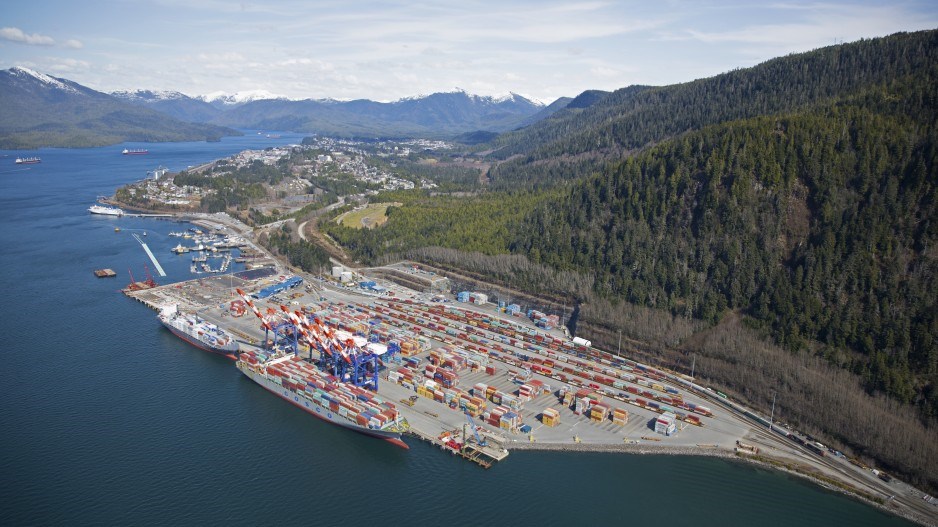South of DP World’s $200 million expansion of Fairview Container Terminal in Prince Rupert on August 29, another expansion took place on Ridley Island – a transloading facility for shipping Canadian pulses and cereals like lentils, peas, beans and wheat overseas to the Asian markets.
The new facility is operated by Ray-Mont Logistics International, a third-party logistics company, which facilitates international exports from domestic and U.S. sellers to buyers overseas – mainly China and India – by transferring cargo shipments from rail cars to shipping containers for export.
Crops grown in the Prairies and the U.S. Midwest are transported in rail cars from agricultural shippers to be unloaded at Ray-Mont’s facility in Prince Rupert via a conveyor unloading system. Cargo is then transferred and loaded into ocean containers for export via the Fairview Container Terminal.
The 10-acre facility includes a rail loop corridor with 100 railcars, a grain dumper pit and a conveyance system, and is expected to employ about 40 people.
“It is our pleasure to be working with the Prince Rupert Port Authority and its partners to establish a new transload facility in the Port of Prince Rupert, and continue to pioneer efficient services for connecting North American crops to overseas customers,” said Charles Raymond, president and CEO of Ray-Mont, in a news release.
According to Loui Stathatos, vice-president and chief commercial officer at Ray-Mont, the main feature of the site is that it has unit train (a train whose cars all carry one particular commodity in bulk loads) capacity. This is very attractive for grain exporters, he said, because it’s something that doesn’t exist in other facilities – plus, when exporters are trying to export large quantities of wheat or other commodities, it makes it easier for them to do it in lot sizes (amount of a good produced at one time) through unit trains.
“[The Port of Prince Rupert] is one of the largest deep-sea ports in North America, which enables larger vessels to dock, and larger vessels mean the ability to carry more cargo,” said Stathatos.
“Up until now in Canada, our West Coast port was Vancouver, and with the growth and demand needs of the Asian market, it was almost impossible for us to continue our growth with that one port. So, for years now, we’ve been trying to find ways to increase the ability for our customers to export cargo, and Vancouver was always a challenge. Prince Rupert allows us a secondary outlet out of the West Coast, so we can actually now increase those Canadian exports.”
The company also has terminal facilities in Montreal and Vancouver, handling about 70,000 20-foot equivalent units (TEUs) or shipping containers.
The new site in Prince Rupert is expected to add an additional 2,500 TEUs a month to the company’s profile.




